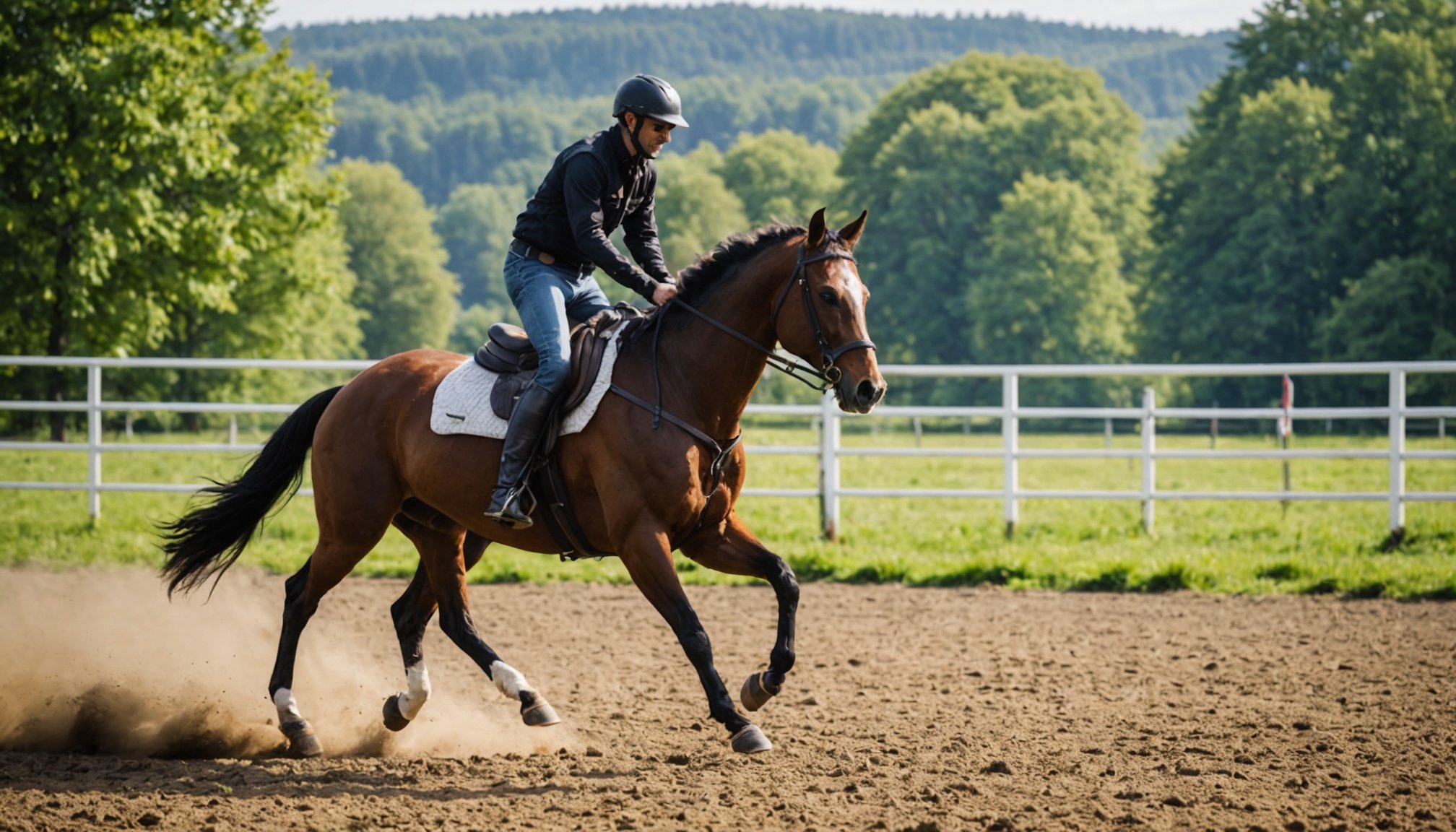Every rider faces unique challenges on their journey to becoming more skilled and confident in the saddle. Whether you are a novice rider or have been around horses for years, building your confidence takes time and training. In this article, we will explore effective methods to enhance your horsemanship, tackle fear, and reach your riding goals. You will learn how to build a positive mindset, develop essential skills, and create a supportive environment that allows both you and your horse to thrive.
Understanding the Connection Between Confidence and Riding Skills
To improve your riding, you must first understand how confidence and riding skills are intertwined. When you feel confident in the saddle, you are more likely to make decisive movements, communicate effectively with your horse, and respond calmly in challenging situations. Conversely, when your riding skills improve, your confidence naturally grows.
Also read : How can you ensure your motorcycle is winter-ready to prevent damage?
Building this connection requires time and patience. Begin by identifying specific areas where you feel less confident. This might include jumping, trail riding, or even basic steering and control. Once you pinpoint your fears, you can work towards overcoming them through targeted training.
Incorporating positive self-talk and visualization techniques can also aid in developing confidence. Before you ride, take a moment to envision yourself executing a perfect maneuver or successfully completing a challenging course. Such mental preparations can significantly impact your performance. Remember, every experienced rider has faced fear at some point; what sets them apart is their willingness to confront and conquer it.
Also to see : What are the benefits of riding gear with integrated airbag technology?
Another way to boost your confidence is through instruction. Engaging with a knowledgeable coach can provide you with personalized feedback and strategies tailored to your unique riding style. They can help you set realistic goals, gradually introducing you to more complex tasks as your skills improve. Ultimately, the journey of building your riding skills and confidence is a continuous process, and with determination, you will see progress.
Setting Realistic Goals for Your Riding Journey
Goals are essential in any endeavor, including riding. They provide direction and motivation, allowing you to measure your progress over time. To effectively build your riding skills and confidence, it is crucial to set realistic and achievable goals.
Start by breaking down your overarching objectives into smaller, manageable tasks. Instead of setting a vague goal like “I want to be a better rider,” specify what that means for you. For example, you might aim to master a specific movement, improve your balance in the saddle, or participate in your first local show. By defining your goals, you can create an actionable plan tailored to your training needs.
Additionally, celebrate your achievements, no matter how minor they may seem. Each small victory contributes to your overall growth as a rider. Keeping a journal to track your progress can be a valuable tool in this process. Regularly reflecting on your experiences can help you identify patterns, recognize improvements, and recalibrate your goals as necessary.
Support from fellow riders can also be instrumental in your journey. Join a riding group or find a mentor who shares your passion. They can provide encouragement, share their own experiences, and help you stay motivated. Remember, the path to mastering riding is not a race but a personal journey that deserves your time and attention. With well-defined goals and a positive support system, you will find yourself becoming a more confident and skilled rider.
The Importance of Consistent Practice and Training
Consistent practice is vital to improving your riding skills and building confidence. Just as athletes train regularly to enhance their performance, riders must dedicate time to practice their techniques and refine their abilities.
Establishing a structured training schedule can greatly benefit your development. Aim for a balance between riding sessions and groundwork exercises. Groundwork helps establish trust and communication between you and your horse, which is essential for a successful partnership. It also allows you to work on your body language and horsemanship skills without the added pressure of being in the saddle.
During your riding sessions, focus on specific aspects of your technique. Whether you are working on your posture, transitions, or even confidence-building exercises, approach each session with a clear intention. Allow yourself the flexibility to repeat exercises until you feel comfortable before moving on to more complex tasks.
Additionally, consider incorporating different riding styles or disciplines into your routine. Trying new approaches can keep your training fresh and exciting while also helping you discover new skills. For instance, if you typically ride English, consider taking a few Western lessons. This diversity can translate into improved skills and greater overall confidence.
Finally, don’t forget to allow for recovery time. Overworking yourself can lead to burnout, which can diminish your confidence and motivation. Make time for rest and reflection in your riding journey. Remember, progress takes time, and being patient with yourself is key to lasting improvement.
Developing a Positive Mindset Towards Riding
A positive mindset is one of the most powerful tools a rider can possess. It shapes your experiences in the saddle and influences how you confront challenges. Developing a positive approach towards riding can be achieved through several strategies.
Begin by practicing gratitude. Focus on what you enjoy about riding, whether it’s the connection with your horse, the beauty of nature during your rides, or the thrill of mastering a new skill. By consciously acknowledging the positives, you cultivate a mindset that fosters confidence and resilience.
Moreover, surround yourself with positivity. Engage with fellow riders who inspire and support you. Their enthusiasm can be contagious, and their experiences may offer valuable insights into overcoming challenges. You may also consider participating in online forums or local riding clubs to share your journey and connect with like-minded individuals.
Setting aside time for self-reflection can also boost your mental approach. Identify any negative thoughts or fears that arise during your rides. Challenge these thoughts by replacing them with empowering affirmations. For instance, instead of thinking, “I can’t handle that jump,” reframe it to, “I am prepared, and I will give it my best effort.”
Additionally, embracing mistakes as learning opportunities is crucial. Every rider makes errors, and rather than allowing them to foster fear, choose to view them as stepping stones to improvement. Recognizing that setbacks are part of the learning process will free you from the pressure of perfection and allow you to ride with greater ease and confidence. Ultimately, cultivating a positive mindset will not only enhance your riding experience but also contribute significantly to your overall growth as a rider.
Improving your riding skills and confidence is a journey that requires commitment, patience, and the right mindset. By understanding the connection between confidence and skill, setting realistic goals, practicing consistently, and fostering a positive attitude, you will steadily progress on your path to becoming a more accomplished rider.
Remember that each step you take, no matter how small, brings you closer to your riding aspirations. Embrace the process and enjoy the ride, both literally and metaphorically. With determination and the right strategies, you will not only enhance your equestrian capabilities but also build a fulfilling relationship with your horse.










